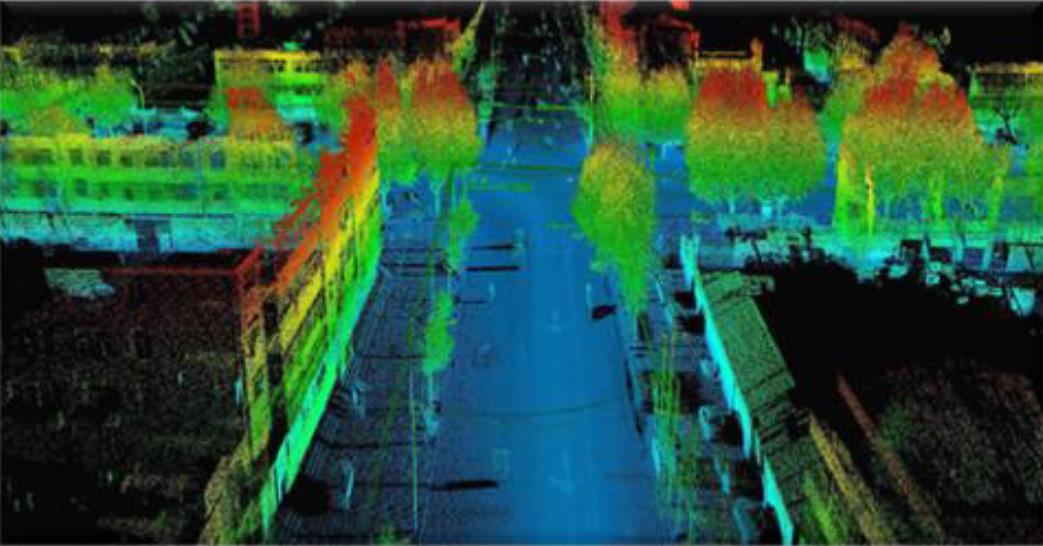LiDAR (LiDAR) is a radar system that detects target position, velocity, and other characteristic variables by emitting a laser beam. In recent years, with the rapid development of fields such as unmanned driving and autonomous driving, the application of LiDAR has become increasingly widespread. Therefore, a user-friendly LiDAR processing software is of great significance for the processing, analysis, and application of LiDAR data. An excellent LiDAR processing software should have the following features:

1. Efficient data processing capabilities
The amount of data collected by LiDAR is huge, so processing software needs to have efficient data processing capabilities, which can quickly preprocess, filter, denoise and other operations on LiDAR data to reduce the burden on computers. In addition, the processing software should also support multiple data formats to facilitate users to import and export LiDAR data in different formats.
2. Powerful data analysis function
Lidar data contains a lot of valuable information, such as target distance, azimuth, altitude, velocity, etc. A good processing software should have powerful data analysis capabilities, which can help users quickly extract the required information and visually display the data analysis results. In addition, the processing software should also support user-defined data analysis algorithms to meet the needs of different scenarios.
3. Intelligent algorithms and application models
Lidar data processing software should have intelligent algorithms and application models that can automatically adjust parameters according to user needs to achieve better data processing results. For example, in object detection tasks, processing software should be able to automatically recognize and select appropriate detection algorithms based on scene characteristics, such as BEV based object detection methods, camera/range view based object detection methods, etc. At the same time, the processing software should also support user-defined algorithms and models to meet the needs of specific application scenarios.
4. Highly customizable and scalable
Different users may have different needs, so LiDAR data processing software should have a high degree of customization. Good software should be able to customize data processing processes, analysis algorithms, and visualization methods according to user needs. In addition, the processing software should also have good scalability, support user-defined functional modules and plugins, so that users can expand and optimize their functions according to their needs.
5. Friendly user interface and ease of use
Lidar data processing software should have a user-friendly interface and ease of use, enabling beginners to quickly get started. Good software should have clear functional divisions and detailed operating instructions, making it easy for users to master. In addition, the processing software should also support multiple operating modes, such as command line, graphical interface, etc., to meet the usage habits of different users.
6. Reliable stability and safety
Lidar data processing software should have reliable stability and security. During long-term operation, the processing software should not encounter issues such as crashes or data loss. At the same time, the processing software should have certain security guarantees, such as data encryption, permission control, etc., to prevent data leakage and malicious attacks.
7. Excellent performance and compatibility
Lidar data processing software should have excellent performance and be able to achieve fast processing and analysis on high-performance computing platforms. In addition, the processing software should have good compatibility, support multiple operating systems and hardware platforms, so that users can process and apply LiDAR data in different environments.
8. Professional technical support and after-sales service
The technical support and after-sales service of LiDAR data processing software are crucial. Good software should provide professional technical support to help users solve problems encountered during use. In addition, software developers should actively listen to user feedback, continuously optimize product features and performance to meet the constantly changing needs of users.
A user-friendly LiDAR processing software that provides users with convenient, efficient, and reliable LiDAR data processing and analysis solutions, promoting the rapid development of unmanned driving, autonomous driving, and other fields.Launched in 2013, LiDAR360 is a professional processing platform for massive point cloud data Ldeveloped by GreenValley International. The platform employs over ten different types of international leading point cloud algorithms, artificial intelligence, and machine learning to promote the use of LiDAR across the industry and solve users' application problems while unlocking the full potential of their point cloud data. The software can analyze and process massive point cloud data, adapts to multiple platforms and devices, and provides more than 700 functions for efficient support of multi-industry applications. Up to now, the number of downloads has exceeded 100,000 worldwide, and the LiDAR360 is used actively in more than 130 countries and regions, receiving an array of praise from clients, contractors, governments as well as tertiary and research institutions.
